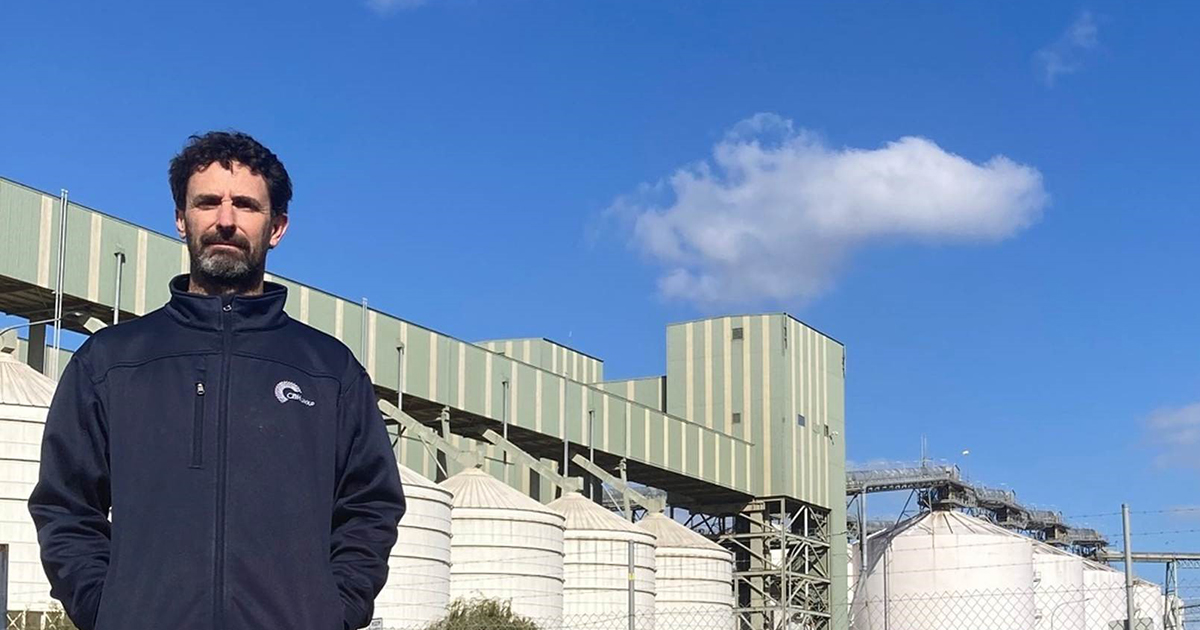Killing weeds and staying below maximum residue limits
with Steven Tilbrook, agronomist, CBH Group
Australia has an excellent reputation for producing clean and nutritious grain for export into markets around the world. We produce about 47 million metric tonnes of grains, of which about 60 to 65 per cent is exported.
Steven Tilbrook, agronomist with the CBH Group in Western Australia, says that two of the greatest risks to Australian grain markets are weed seed contamination and chemical residues.
“Australian farmers are doing a great job on both fronts,” he says. “As new products and use patterns come to market, it is important that growers and agronomists continue to work within the label requirements to avoid any residue issues in grain delivered for human or animal consumption.”
When grain is free of any residues, grain marketers can access more markets and often attract premium prices for the grower.
“Testing for chemical residues is conducted at numerous points along the supply chain. The equipment used is very sensitive, able to detect residues of 0.01 mg/kg, equivalent to 10 grains of wheat in a 50-tonne truck load,” says Steven. “Every chemical registered for use in Australia has a maximum residue limit, or MRL, that must not be exceeded. However, grain that meets the Australian MRL may not meet the MRL for an importing country.”
Adhering to herbicide label instructions and avoiding spray drift onto other crops is the best way to minimise the risk of contamination and having a load of grain turned away from an overseas port, causing extensive damage to the Australian grain industry. In addition to the Directions for Use tables, labels now have very specific Residue Management Restraints that must be followed.
Farming with low weed numbers makes it easier for growers to produce low or nil residue grain that can be sold into the most profitable market – this is another way the WeedSmart Big 6 framework helps make sure that weeds are not calling the shots in your business.
Example #1 – Haloxyfop in canola
A few years ago, the European Union (EU) declared that the EU MRL for haloxyfop on canola grain would be set at half the Australian MRL. At the time of the announcement, most canola delivered to CBH in Western Australia was meeting the Australian MRL, but some loads would have exceeded the proposed EU MRL.
CBH took a proactive approach to maintain the EU market for canola by conducting an extensive information campaign with growers and agronomists. By the time the new EU MRL took effect, all stocks in the supply chain were suitable for the EU market.
To achieve this result, growers have avoided the use of haloxyfop for grass control, only used haloxyfop to control erodium, applied haloxyfop at the lowest label rate at the 2-leaf crop stage and not applied haloxyfop across the whole canola program.
Example #2 – Paraquat in lupins
The EU market has a very low tolerance for paraquat residue in lupin. The EU MRL for paraquat in lupin grain is one-fiftieth of the Australian MRL.
Paraquat can be an effective method of seed sterilisation when applied as a crop-topping or preharvest treatment; however, it should be only be used when and where necessary. Higher label rates and early application timing to target weeds increases the risk of exceeding the EU MRL and is likely to impact lupin yield. If wild radish is present, other herbicide options are available.
It is also important to avoid paraquat spray drift from adjacent crops onto canola (particularly in spring) and to take care with sprayer hygiene after using paraquat.
When using paraquat as an aid to harvest, use the lower label rate and delay application until 80 per cent leaf drop to preserve yield and keep residue levels below the EU MRL.
At harvest, use harvest weed seed control tactics to target weed escapes.
Example #3 – Glyphosate in RR canola
TruFlex canola with Roundup Ready Technology has provided growers with a valuable option for weed control and to combat resistance to other modes of action.
The pre-harvest application of glyphosate in canola is intended as a salvage spray. The practice of applying glyphosate across every canola paddock has the potential to challenge the MRLs in some export markets.
When making late-season salvage applications of glyphosate, use the lower label rate and delay application until 20 per cent of the seed has changed from green to completely black-brown (on the lower branches) and mostly brown with some speckling (on the mid-level branches.
As with paraquat in lupins, setting up a competitive crop with robust early-season weed control is the best way to avoid the need for late-season application of glyphosate in TruFlex canola. Windrowing and harvest weed seed control are essential practices for collecting and destroying seed from weed escapes.
More resources
CBH Group article – Haloxyfop in canola
CBH Group article – Glyphosate residues in canola
CBH Group article – Pre-harvest herbicide applications

Steven Tilbrook, agronomist with the CBH Group in Western Australia, says that two of the greatest risks to Australian grain markets are weed seed contamination and chemical residues. (Photo: CBH Group)


